It’s Time to Reopen Schools Everywhere
The evidence is too clear to ignore at this point.
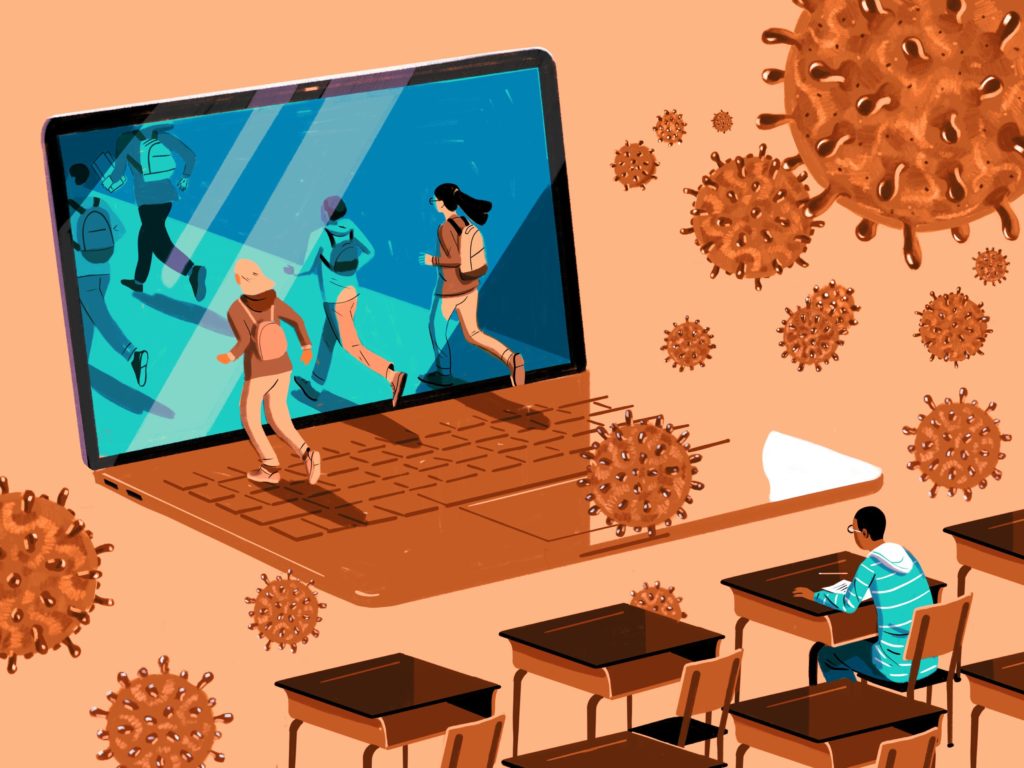
So says Kevin Drum, and I agree with him.
He points to the latest test case, the state of Florida, which went back to full in-resident classes in August without the schools becoming COVID super-spreaders. Which is exactly what’s happened everywhere that it’s been tried with reasonable precautions. Says Kevin,
I’m not sure how much more evidence we need. Both academic research and real-world experience now says the same thing: schools can be reopened with minimal risk and without massive mitigation efforts. Three-foot spacing, masks, and regular testing seem to be enough.
A few exceptions need to be made for teachers and staff who are at high risk and haven’t yet been vaccinated, but otherwise there’s little reason for teachers unions or anyone else to object to reopening schools. It’s time to get kids back in real classrooms, where they belong.
The local schools in Fairfax County, Virginia, which my two daughters and my youngest stepdaughter attend, were supposed to open on a staggered basis in September but kicked the can down the road multiple times—once two days before classes were to resume. My daughters, both in elementary school, finally started back two days a week Tuesday. My stepdaughter, a high school senior who hasn’t been on campus in over a year (except to take senior pictures over the summer!) decided it wasn’t worth going back because it was going to essentially be virtual instruction in person.
Beyond the fact that the teachers unions have run the show on this, overriding elected officials and health authorities, they’ve opened in about the stupidest way possible. They’re requiring not only masks but absurd levels of social distancing. Further, long after we’ve come to understand that the virus isn’t spread by coming in contact with objects, they’re not allowing kids to touch the same balls or even share sidewalk chalk at recess. And they’re requiring them to be masked and ten feet apart even outdoors!
Ostensibly, they’re going to open on something of a normal basis in the fall. I’ll believe it when I see it.

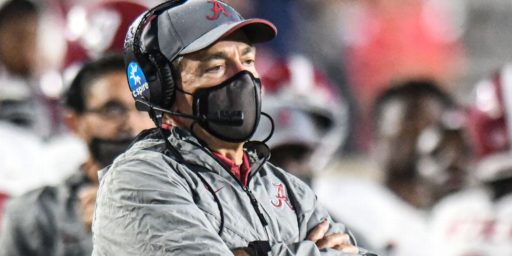
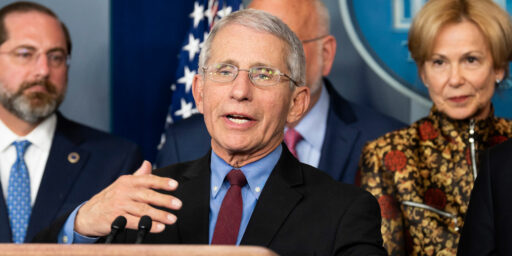
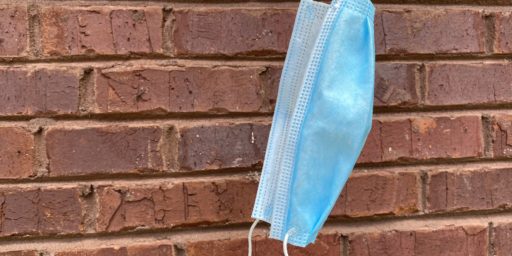
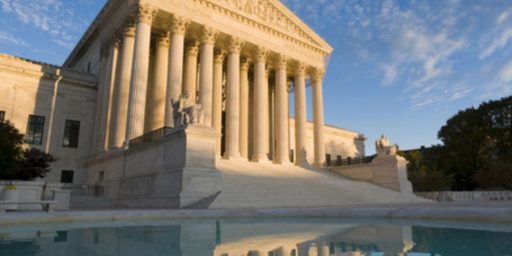
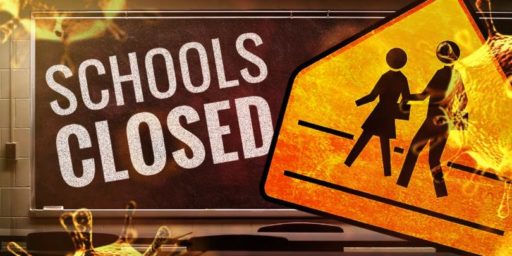
My two high schoolers (senior and sophomore) made the same decision. My eldest, who is in a specialized program for special needs, wants to go back even if it is only 1 or 2 days a week.
Of note, the amount of detail in the planning and precautions between the public schools and the non-public school is two different worlds.
Yeah, this isn’t true – at least not here in Maryland. In fact, to the extent anyone here was overruling health authorities, it was the ones pushing to reopen regardless of safety precautions.
And it is that aspect – the safety precautions – that I keep seeing get ignored. Case in point, the news today that the CDC is revisiting the 6 foot guidance for schools. Great, they are following the science and evidence BUT that guidance comes with the caveats that masking is in place and there is adequate ventilation. Mostly I see folks who are whining that the schools aren’t opening when it is safe to do so ignoring the conditions that make it safe to do so.
I’m certainly no specialist, but Chait’s case is weak. It mainly points to a single study done in NYC, which was conducted during partial lockdown (i.e. with reduced class sizes), with full closures during Covid peaks and only in schools with vetted safety measures. And under these circumstances, Covid rates matched the general population. To the best of my knowledge, there is still no firm data regarding lower transmission between kids.
I would also note that we generally accept community transmission rates because killing off everything is unsustainable. Regarding children, where (lack of) attendance does not really affect wider society as business does, the case for taking these risks is much weaker. The articles on this tend to confuse “it’s safe” with “it’s as safe as for grown-ups” without evaluating whether that is an acceptable standard for schools.
That said, personally I think that given sufficient precautions (HEPA filtration or equivalent (!) air exchange – none of that “we will open a window until someone complains” – and masks during class), school is a reasonable risk. But I would want some serious investment in safety infrastructure before feeling comfortable with my kids returning full-time.
With the availability of the vaccine, it is time to open the schools as the damage having schools closed on children and families is too great a burden to continue. The children of the well-to-do will recover, as the families have the financial where with all to hire tutors etc., but we’re facing a lost generation among the children of the poor to the lower middle class.
As far as the teachers, for some, for instance, those with comorbidities, we need to make reasonable accommodations. But for those who are mostly worried, perhaps they need to find another career.
School districts need to continue to improve the physical plant, ventilation, spacing etc, but that can be an ongoing project. Vaccinate the teachers and get the kids back in school.
@Ebenezer_Arvigenius: i had a very unusual job a few years ago in a very specialized field: if your Clean Bench or Biological Safety Cabinet needed its industrial-size HEPA filter tested, repaired, or replaced, we were one of the few companies you could call. HEPAs could keep a school safe, but we’re talking 1000s-of-dollar machines, not the $150 unit down at Lowe’s.
Fun Fact: if an industrial HEPA filter gets a hole poked in it, you fix it by rubbing silicone caulk into it, if the hole isn’t very big.
@Sleeping Dog:
I’m not sure “if you don’t want to risk death from a pandemic then you shouldn’t have been a teacher” is the greatest message. (I kid 😉
The biggest issue with all of this is that many of the “schools are safe” arguments pre-suppose that all preventive measures are in place and followed diligently; masking, distancing, proper air filtering, etc. etc. The reality is that very often they are not. Many schools do not have the money to completely revamp their ventilation systems, for instance. I just walked by a school the other day here in NO that had box fans duct-taped in to windows, presumably because going to Lowes and buying 100 fans is cheaper and easier than revamping the whole HVAC system in a 100 year old building.
So yes, of course we should open schools if we can do so safely. But “in an ideal situation things should be fine” is rarely a good argument.
@Ebenezer_Arvigenius:
Without taking a position on the larger question of whether it’s safe to open the schools again, I have to push back on this one. I think you are massively underestimating the extent to which lower-income Americans depend economically on the public schools simply as day care. There aren’t that many blue collar jobs that you can do while babysitting.
It’s almost funny how some people are all about “the science” unless they disagree with it.
All this virus did was give the ruling class power to make our lives worse while they don’t lose a dime.
And don’t get me started on the fn teachers union, they churn out uneducated kids and whine about needing more money….what a racket, no wonder they need Democrats in office- who else would coddle their lazy asses?
I have a few friends who are teachers, and some of their objections were pretty legitimate. In one case, teachers were told that they would be required to sanitize their own classrooms, wiping down desks and floors *several times a DAY* in order to comply.
They (IMHO, correctly) objected to being deputized as part of the cleaning staff simply because parents didn’t want their kids home anymore.
@SKI: Yeah, and [sigh], but Dr. Joyner is first, last, and always a conservative, so we might as well just shake our heads at the union bashing, ultimately being thankful that itś only meaningless blather for him.
@Jon:
Take schools out of the statement and insert the name of any business or building and it would be accurate. If perfect, even near perfect safety is the goal, schools and other businesses will never open. With the availability of vaccines, we are at the point where the risk of the illness is falling below the damage being done to children.
@DrDaveT: This again–without going into the failure of a model that takes 12 years to teach children (what exactly that couldn’t be learned in 7-8 years?) But the argument of opening school because of social harm is a category error. Schools are not there to provide free day care and supplement meals. They do it because Americans by an large want Gov’t to do things–BUT DON’T WANT TO PAY.
All of these social ills could be remedied separately leaving schools free to do what a school is supposed to do–but no–schools also have to be the guarantor of child welfare as well.
This is really simple–if we mandate that Teachers have to come back to work–we should also mandate that the children returning to in-person also be vaccinated. They have to vaccinated against T.B., Measles, etc do they not?
Frankly, part of me wants them to stay closed so we break this ridiculous model of education that we are operating. Nature hates a vacuum so this pandemic is a good catalyst for better models to come to the front. I also find it laughable that right leaning people always find a way to fire shots at Teachers Unions–without answering the fundamental question: Where the remediations to mitigate risk implemented. In many cases, that is NOT the case. That’s not a Teachers Union issue–that a local gov’t issue. If the remediations were in place–and the TU still refused to report to work–that would be worthy of blame.
Yeah, I agree. The science has long supported opening at least elementary schools and now the evidence is just overwhelming. Combined with teachers getting priority in vaccination, there just isn’t any excuse anymore. The damage of what will be a lost year for too many children is simply too great compared to the relatively mild risk of Covid today.
And as we discussed in another thread, my district has had in-person school since September with elementary students going 5 days a week and junior and senior students having the option of hybrid (2 days/week), or all synchronous online. In a district with 35,000 students and staff there have been a total of 541 positive covid cases but only a tiny percentage of those were traced to transmission in the school themselves – the vast majority of those cases came from transmission outside the school system.
And this is with reasonable precautions – a 3foot rule, everyone wearing masks, student cohorts, staggered lunch/recess times, plus requiring students and staff to stay home anytime they don’t feel 100% well or were around someone who didn’t feel well.
At least in the case of our district, these measures all worked extremely well.
And the continued closing of schools has been an equity disaster that has hurt the neediest and most vulnerable families the most. I think the data will likely show a massive asymmetry in outomes and districts that stayed closed and still choose to stay closed despite the evidence.
@Jen: Here, we sanitize only the desks–floors are carpeted, even in most of the hallways. Whatś interesting to me is the sanitizing desks debated–leave the spray on for a minute or wipe it off right away. Different buildings/rooms/teachers, different protocols.
@Sleeping Dog: I find the entire “damage being done to kids..” weak tea. If a child is in a damaging environment–8 hours out of day a school isn’t going to offset the other 16 hours and weekends they have to live in their negative environment.
If we are talking education–lets be honest– this is a self-imposed falling behind with respect to those ridiculous standardized tests. Which aren’t really education at all. The classical Trivium/Quadrivium education can be taught to an intermediate level in 4-5 years. Once can spend a lifetime gaining depth after that.
And I say this being the black sheep in a family of educators.
“Reopen schools everywhere” makes me assume you mean force kids back into physical classrooms…and that’s a hard no from my family, even after both of us adults are fully vaccinated. We are not comfortable sending my son back to school until HE is vaccinated also.
One thing that has become clear over the last year is that people have different risk tolerances. I do understand that kids account for only .04 percent of deaths from COVID; but that’s still a lot of unnecessary deaths, imo. I’m coming at this from the perspective of someone who has a lot of health issues, and always the weird ones (genetic disorders that only affect one in 50,000…well, hello there, I’m the one!).
I’m not expecting other people to be as cautious as I am…fine, reopen schools (they’re already open everywhere that I’m aware of)…but do NOT force kids/families into taking unnecessary risks when the infrastructure is there to offer virtual instruction in parallel.
@Holly:
And, it bears repeating: death isn’t the only adverse outcome, it’s just the most final one. A good friend of mine’s teenage son had covid and recovered. He is one of the many, many people who continues to have health complications because of it. His blood oxygen level drops randomly and he has continued to have both breathing and heart issues.
Just wait until the Brazil version of Covid becomes prevalent. It’s hitting young people at a much higher rate than the other variants running around.
And yeah, considering that kids are little disease vectors I really really doubt that teachers are going to want to put themselves at risk, especially those with higher risk conditions.
If we’re going to go down this road can we at least have mandatory vaccinations of all kids against Covid before re-opening the schools?
@DrDaveT: Admittedly. I was mainly talking about the Chait article which doesn’t give this as a reason for opening. And as this isn’t really an issue around here it just wasn’t on my radar. Still seems like a bloody bad reason to risk a kid’s life to me. But if the system doesn’t offer any alternatives …
@Holly:
I don’t think anyone is talking about forcing kids into classrooms. I’m unaware of any school district in the country that does this. Those that have had in-person school have made it optional with synchronous online learning or other methods as an alternative. It’s entirely about the option for in-person schooling.
As for getting our kid vaccinated, that’s not going to happen anytime soon. The current vaccines aren’t officially approved – they are operating under an “emergency use authorization.” As far as I’m aware, there has been no safety testing for children, which is why they are not eligible for the vaccine.
@Jim Brown 32:
Kids are resilient but even at this early stage, we have a pretty good idea that a non-trivial number of children lost a year of education. There is also a big emotional toll for many kids. IMO that is a big deal.
In my own case, online and hybrid was a disaster for my two boys, but was just fine for my daughter. We moved our oldest son to a different district school that had 4-days of in-person in because his struggles were starting to cause depression and he was in therapy. He’s now doing great. I personally know tons of families in my area with similar issues and this is a middle-class area. More disadvantaged areas are in even worse shape.
@Jim Brown 32:
You may find “damage done to kids, weak tea.” but learning is why schools exist in the first place. In 10-20 years when large numbers of those who are school age today, are flailing in the workplace due to inadequate education they will be the victims again because society will blame them.
@Jim Brown 32:
The lack of socialization is a huge problem with younger kids.
And the online education is not great, and kids brains are only plastic for a few years, so we are missing a window to teach them how to learn, which often requires hands on instruction and care.
As the kids get older, the damage gets less. But, we should be doing everything possible to get schools for younger kids open (I would close some high schools to get the classroom space, if we need more space because of social distancing and smaller class sizes.
@Jim Brown 32:
Fun Fact: We have not tested any of the vaccines for safety with children.
The evidence shows that younger children transmit covid much less than expected, but I would still be wary of the little beasts carrying it home.
We need to have pilot programs, and make sure that opening is going to be as safe as the CDC currently thinks. I would want federal oversight, to ensure some degree of uniformity and that we get good data.
@Andy:
This would be a stronger argument if teachers actually got priority in vaccination. They don’t, at least not everywhere.
You argued before that state authorities would know better than federal authorities how to prioritize vaccinations. Do you stand by that? Are those places that have not prioritized vaccinating teachers making the right call? If so, should we open the schools anyway in those states?
@Jim Brown 32:
Ah, but as you aptly noted above, we are NOT talking education. We’re talking schools, and economics. “Our children are falling behind in their education” is the weakest available argument for opening the schools, with the possible exception of college-bound seniors. “Our economy doesn’t function if we don’t provide back-door day care through the public schools” is both true and important. You and I can moan about how that’s a stupid way to run a society, but it’s the only way we have at the moment, and we aren’t going to fix it while waiting for everyone to be vaccinated.
Here in Rochester, NY, the relatively affluent suburban schools have been open for months. Case rates are reported to the state and available via website. A significant investment in testing students was part of the reopening. Case rates are very low. But the city schools, which are so mismanaged that they have multi-million dollar deficits, did not reopen. This shows that the rule of thumb for the pandemic is if you were in a bad spot before it started, you’re probably in a worse place now, and if you were in a good spot, you’re probably still OK.
@Holly:
While child deaths are not negligible, I think the more important question is what fraction of transmission paths involve kids. Our data on that are much less firm, but it’s impossible to make an informed decision on opening vs. staying closed without having some idea of how that will affect overall transmission rates.
A year ago, we were all debating the relative merits of different forecasting models of virus spread and impact. Does anyone know of a model that takes into account both vaccine penetration and the latest data on transmission probabilities?
@mistermix:
Thank you for reminding us of the other variable here, which is how you manage monitoring and contact tracing once things have reopened. South Korea showed that you can get on with life to a larger degree if you’re willing to be obsessive about tracking who is infected and where they have been.
@mistermix:
Given that schools are funded through local taxes, claiming that a less affluent area is “mismanaged” due to deficits seems like it isn’t a well-founded claim. Low income areas, in addition to having less tax base to support the schools, also tend to have higher per capita expenses as the issues they deal with are more expensive.
@Jen: Both locally and in most of the big city districts I’ve read about, the teachers themselves are taking much less extreme–and certainly more varied–positions than their unions.
@Jim Brown 32: I’m as critical as the next guy, unless he’s Michael Reynolds, of our antiquated model of public education. But the bottom line is that I’m legally required to send my kids to school and am taxed thousands of dollars a year for public education. It’s not at all unreasonable to therefore build our lives around the notion that they’re in school most workdays from September through June. And, as @DrDaveT notes, most people are a hell of lot less financially able to absorb the hit than we are.
@DrDaveT:
I haven’t done a survey, but my understanding is that most places have teachers at least in an “essential workers” category that is a higher priority than the general population. And in many places, they are placed much higher than that. If there are places where teachers get no extra priority, then I’m not aware of them, but I would be surprised if that were the case.
I do stand by that. This country is too big and diverse for a one-size-fits-all approach where there are real and material differences in circumstances between states and localities. The federal government doesn’t have the capacity or information to make decisions about resource allocation at the local level, much less determine needs for specific schools or which sites should provide vaccines and how much vaccine those sites should have on-hand. Hell, the federal government doesn’t even really know who does and doesn’t need the stimulus payments we’ve received over the last year because the only information it has to assess that is tax data which is always old and is blind to current circumstances. Same with unemployment benefits – the states have all the information and infrastructure for that.
If the federal government actually had the ability to do any of these things, then my view might be different. But they don’t.
I don’t know if they are making the right call. Tagging onto my point above, I don’t have the information to know what is best for people I don’t know who live in places I’ve never been to. So I don’t make the assumption that I know what is better for them.
Same with opening the schools – that is their call to make because they are the direct representatives for the people who are actually affected and are best positioned to make that call. As noted above, for my district, I think they made the right call, and I’m glad they had the authority to make that call within the confines of state-level guidance and mandates. That is much better than leaving things to the feds in DC, where every decision politicized.
If states and localities make a mistake and screw it up, then they ought to be held accountable the same as any level of government.
I’d add that if we are really following the science then I think – as a general rule – the balance of evidence has tipped in favor of opening schools as the default position. In other words, at this point, keeping schools closed should be the exception based on specific needs driven by specific local circumstances. Again, the people running those schools are the ones who have the information, knowledge, and authority to make those calls – unlike you, me, or a federal bureaucrat.
@SKI:
I’m actually in Rochester too and while in general, I agree with your position, there’s pretty significant evidence of heavy financial mismanagement at the administrative level. There was supposed to be a pretty in-depth investigation into what happened and then Covid happened and I’ve lost track of the story. But some background is here:
https://www.rochestercitynewspaper.com/rochester/state-official-wants-investigation-of-the-rcsd/Content?oid=10917957
Also @mistermix:
A GAZILLION TIMES this!
Granddaughter #1’s school is split between two buildings several blocks apart. K-6, where she is, has been in-person this entire school year. Two cases, one student and one staff, several weeks apart, both linked to outside exposures. 7-12 in the other building has been and continues to be remote learning. They’ve tried opening a few times, each one followed by an immediate outbreak.
@Holly: Another factor to c tonsider is the type of instruction the student needs/wants. For lower grades, there is still a considerable amount of direct instruction where students probably benefit from the interaction. As early as 4th or 5th grade though, the job of teacher shifts from direct instruction more to management of curriculum/record administration. A large amount of discussion is farmed out in small group breakouts, and significant presentation is handled through internet links.
While I´m not a fan, for one thing my job as a substitute teacher is waaaay more boring than when I used to give diction and vocal training workshops and lead classroom discussions as a guest teacher 20 year ago, we are entering the world of ¨any teacher who can be replaced by a machine should be.¨ The larger question is probably what to do with the students who do not thrive on machine instruction–a topic largely avoided so far today, it seems to me.
@DrDaveT: I will note in passing that the first time either district for which I do substitute teaching offered testing in school buildings was March 15 of 2021. And that is only for one of the two.
Came late to this party but here are my two cents:
My wife is an elementary school counselor at a Title I school here in San Antonio. It’s an affluent district but the school has lower socio-economic population. School has been open since August.
Basic facts
Enrollment: 540
In person enrollment: 365
Student cases: 9
Teacher cases: 7
Source of infection:
On campus: 0
Off campus: 4
Unknown: 12
From my observation (anecdotally from listening to my wife), the really issue is the impact from the pandemic on poor families (unemployment, lack of health insurance, instability of families, lack of child care, movement in and out of school boundaries, lack of access to mental health care, lessen support and separation from grandparents, and all the other issues on poor families just magnified)
It’s going to take some effort to recover. I know district is going to have multiple sessions of summer school. Also, a couple of schools are going to a year round model which I support (push back from businesses and wealthier families). With sense, the standardized tests will be used for diagnostic purposes only even though they are not design for that.
@Andy:Again in passing, I will note that the first day that teachers became identified as *essential workers* in my state was March 1, 2021. My two districts have been aggressive about spreading the word and connecting teachers with opportunities to be vaccinated, but even so, most younger teachers only started getting vaccinations late last week.
Moderna is actually in stage 2/3 of testing on kids/babies as young as 6 months old. https://www.axios.com/moderna-vaccine-children-3cdd7a5d-573d-49eb-929e-e61a2ff5cd7b.html
@Jax:
That’s awesome news, thanks!
It’s March 18, so we’re talking about what, three months of school before summer? I sympathize deeply with parents stuck at home with kids – mine are grown and out of the house but when they were, say, three years old? Or in middle school? There would have been blood on the hardwood.
Supposedly we’ll have vaccines available for everyone my end of May. I’m not seeing the urgency. Why not write off the rest of this year, let teachers and administrators take a breath to figure out how to deal with issues of lesson plans and curricula, start it up in June and make 2021/22 a long school year. Knock off the standardized tests since they’ll be outliers, eliminate teacher days, eliminate as many time-wasters as possible (the California ‘build a mission’ thing is an example), focus on actual education, and figure the machine will be back on track for 22/23?
@Michael Reynolds:
I think early may is the date everyone is eligible, and that it will take a few months after that, so timing may be off.
Sounds good, but… There’s likely always going to be some reason to delay. And the damage done to younger kids is worse the longer it does on.
I don’t know why we are always talking about schools, like they are all the same. The age makes a big difference both in transmission and the harm in the kids being isolated, plus the ability to learn. It’s not the same problem
@Gustopher:
That’s a very good point. If we focused on, say, kindergarten to fourth grade (just pulling those grades out of the air) we’d have no difficulty finding room to social distance, and we’d be able to exempt teachers with pre-existing conditions.
@Sleeping Dog:
That’s just it–I don’t believe what they are receiving is an “education”. I am aware of no workplace that works like school works–and I would wager that no traditional school does. Maybe Montesori-type school where the children are self directed. School is to a sports combine as the combine is to the actual game.
@Gustopher: I would admit that schools provide a catalyst for children to sharpen socialization skills…but they do not teach them. They are also not any better catalyst than any other environment where one has to learn to get along with other people. Schools certainly do not teach social skills.
@Bill: “All this virus did was give the ruling class power to make our lives worse while they don’t lose a dime.”
Yes, that’s all the virus did. Oh, except kill half a million of your fellow Americans. But we can’t expect someone like you to care about that…
@Bill: And don’t get me started on the fn teachers union, they churn out uneducated kids and whine about needing more money….what a racket, no wonder they need Democrats in office- who else would coddle their lazy asses?
As the husband of someone who taught for 30 years, and who loved what she did, I thought of all the arguments to your eloquent remarks, and the most appropriate one I could come up with is: GFY!
My son’s school, one of the massive Fairfax County secondary schools, returned to partial in-person instruction last week. Now we get daily emails telling us multiple students have tested positive for COVID-19. I can’t imagine how bad it would be if all 5,000 students and staff were in the building every day.
@Andy:
>>I don’t think anyone is talking about forcing kids into classrooms. I’m unaware of any school district in the country that does this. Those that have had in-person school have made it optional with synchronous online learning or other methods as an alternative. It’s entirely about the option for in-person schooling.
My mistake, since I thought almost all schools were already open in that sense. Texas made that mandatory last fall…in order to get TEA funding, schools had no choice but to open (in many cases, the in-person opening was delayed, but only by a month or so after the official start date in August). Are there really schools that have no in-person students after all this time? That’s surprising to me. I guess I’ve been living under a rock.
>>As for getting our kid vaccinated, that’s not going to happen anytime soon.
I’m aware of that; and that’s why I’m really worried that Texas schools…which have always been pushing hard to get kids back into classrooms…may pull the virtual option in the fall. We’ve gotten surveys to gauge parents’ “interest” in a virtual option this fall, so clearly it’s not decided yet. I believe our school district will do the right thing, but the TEA is not making it easy.
@wr:
Well, that’s some straight up Marxism right there. I’m concerned that @Bill may have been infiltrated by Antifa.
@James Joyner:
Seriously, when did we come to understand this?
Is this even true?
Would you care to share a used tissue with a stranger? How about a crayon that just came out of a kid’s nose? How about sharing N95 masks? (note that these are all “objects”)
@wr: yeah, people who were going to die of whatever virus hit them for the most part. It wasn’t worth the fuss, shutting down the country so you can dodge an airborne virus isn’t prudent.
Oh, senior Dave….I have many family members in the education business, as I was briefly, so get off the cross you easily triggered db!